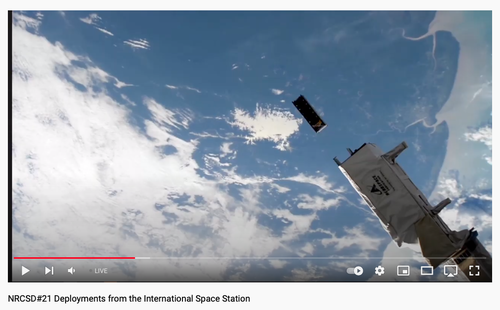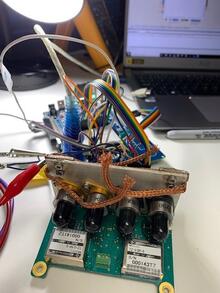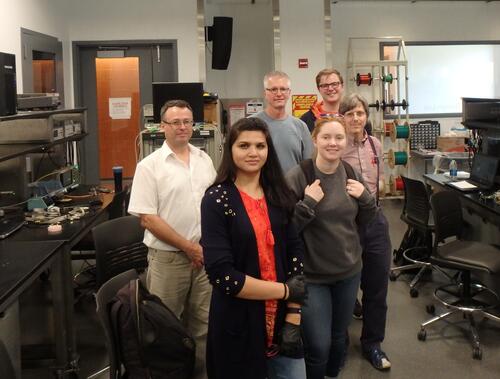A satellite to test in-orbit laser annealing was sent into orbit from the International Space Station (ISS) today, marking an important step towards the realization of secure quantum communication using satellites and a global quantum internet.
University of Waterloo professor Thomas Jennewein from the Department of Physics and Astronomy and a member of the Institute for Quantum Computing collaborated with the University of Illinois Urbana-Champaign to design, build and test the “Cool Annealing Payload Satellite (CAPSat)” that will perform in-orbit tests and annealing of single-photon detectors based on silicon avalanche photo diodes.

The Cool Annealing Payload Satellite (CAPSat) deploying from the robotic arm of the International Space Station (ISS) to begin its in-orbit quantum annealing experiments is shown in a screenshot from the live feed. See a recording of the deployment.

The photodetector module during the final flight hardware test in the Quantum Photonics Lab at the Institute for Quantum Computing.
Exposure
to
space
radiation
damages
the
ultra-sensitive
photodetectors
that
are
onboard
quantum
communication
satellites,
making
the
photodetectors
less
reliable
over
time
at
detecting
single
photons.
This
prevents
the
satellites
from
performing Quantum
Key
Distribution
(QKD),
which
guarantees
a
secure
communication
channel
even
against
an
attack
from
a
hacker.
CAPSat
aims
to
study
novel
approaches
to
anneal
the
photodetectors
and
maintain
the
satellite’s
ability
to
perform
secure
QKD
without
the
need
for
excessive
cooling.
One
of
the
biggest
challenges
was
designing
the
satellite
components
to
fit
in
the
tight
dimensions
–
a
mere
10
cm
square
by
30
cm
long,
and
to
operate
with
low
power
consumption. IQC
research
associate
Nigar
Sultana,
who
has
been
working
on
the
detector
module
for
the
CAPSat
project
since
it
kicked
off
six
years
ago,
said
“everything
matters,
even
the
small
things
like
glue.”
Although
small
in
size,
CAPSat’s
potential
impact
is
big;
it
could
provide
a
very
efficient
method
to
mitigate
radiation
damage
of
single-photon
detectors
in
orbit.

Canadian principal investigator Thomas Jennewein and Research Associate Nigar Sultana meet with Paul Kwiat and collaborators at the University of Illinois at Urbana-Champaign.
“The deployment of CAPSat demonstrates proof of concept that will pave the way for future quantum communication missions,” said Jennewein.
CAPSat was successfully launched into space on Sunday, August 29 on board the SpaceX Dragon CRS-23 cargo ship, arriving at the ISS. Today at 7:00 EDT, it was deployed in its transport canister from the ISS robotic arm and begins in-orbit quantum annealing experiments. See a recording of CAPSat's launch.
The Waterloo team acknowledges dedicated support by the Canadian Space Agency (FAST program).